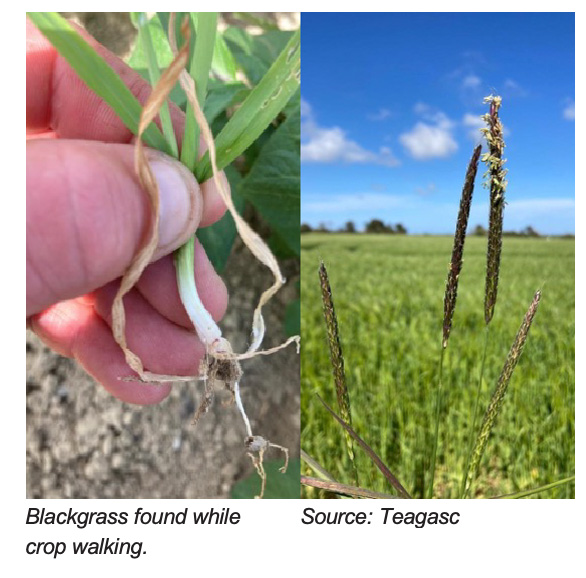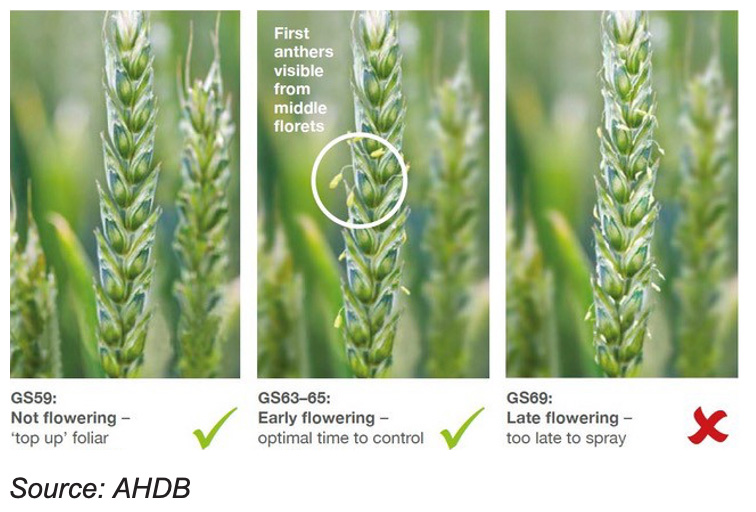
Agronomy Update
As the agronomic husbandry of crops finalises into the coming weeks, the next few weeks is a crucial time to walk the fields and assess any (potential) problems which may have manifested over the course of the growing season. Weeds such as blackgrass, brome grasses, canary and scutch grass should be noted. A plan of action can then be created - which fields to harvest first/ last (preventing spread of weeds), or potentially discarding certain areas of fields. Management decisions can be easier post-harvest as you know the problem areas of your fields. Blackgrass is becoming an increasing concern in Ireland, and can become a serious problem if ignored. Each plant can produce up to 6,000 seeds/m2. Tackling it now before it produces viable seed should be a priority. Hand rogueing small areas will be beneficial, while burning off larger areas may be necessary. Consult your Drummonds Agronomist if you are unsure of identifying some grassweeds on your farm.
Black Grass
 See below of a list of cultural methods to control weeds on your farm:
See below of a list of cultural methods to control weeds on your farm:
- Ploughing: to a depth of at least 6 inches to ensure inversion of the furrow, completely burying the seed.
- Allow for a wider or narrower headland when ploughing as accumulations tend to thrive where the plough is lifted out at the This is due to poor burial of the seeds in this particular area.
- Limit the spread of seeds by ensuring ALL machinery for example, harvesters, trailers, balers , are cleaned out properly before entering a new field. Blowing machinery down with an air compressor is one of the best ways to do this.
- Use certified seed: the Department of Agriculture and the Irish Seed Trade Association have adopted a zero – tolerance approach to invasive weed Certified seed is brome free.
- Rotation: a non-cereal break crop allows a wider range of herbicides to tackle the A spring crop allows a stale seedbed over winter. Try to avoid continuous cereal crops. Also, as weed species germinate in different seasons, switching between spring and winter cropping can reduce the build-up of the weed seed bank.
- Shallow cultivate after harvest to encourage germination of seeds, once germinated spray with glyphosate; and then plough
- Delaying drilling date.
We must do all we can to deal with weeds before searching for the solution from the can – this also preventing the build-up of herbicide resistance, and forms part of an Integrated Pest Management (IPM) strategy.
Winter Wheat
The mid – flowering stage is the ideal time for head sprays in winter wheat. Here, we top up disease control to the flag leaf and provide protection against ear diseases such as fusarium. Wet and warm weather during flowering increases the risk of disease development. Keep an eye out for yellow rust and other diseases which may have moved into the crop. Keep a close eye out for aphids, particularly those fields along the coast and those surrounded by high hedges. An insecticide may be needed. Apply Drummonds Super K Plus at 3L/ha to allow crops to reach their maximum potential. Potassium is an essential nutrient for straw strength and improves grain quality by raising the kph.
Spring Barley
There is a lot of BYDV in crops around the North East, due to the mild winter allowing for the survival of large numbers of aphids. Apply the head spray to spring barley at awn emergence. This is called the paintbrush stage. Add Magnitech at 2.5L/ha for increased green leaf area duration and improved crop performance. It can improve yield and kph.
Beans
Applying fungicide before disease appears and develops in beans is crucially important. Prevention is better than a cure, and that is certainly the case for beans. Apply a fungicide at the start of flowering and 2-3 weeks after. Watch out for Downey Mildew as there is a lot of it around lately. Use Drummonds Superphite Pro at 2L/ha for additional control.
Spring Barley
Mildew and rusts are the biggest threats to these crops at the moment. Use a broad spectrum fungicide such as Velogy or a Decoy + Comet mix to tackle these. Ensure PGR is applied to Oats at GS 32 and can be mixed with a suitable fungicide.
For further information Speak to your local Drummonds Agronomist.


